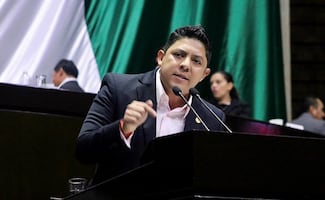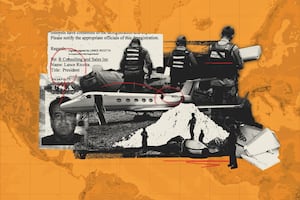Más Información

En SLP nunca ha existido una gobernadora y ahora hay una posibilidad real que así sea, asegura Ricardo Gallardo tras aprobación de "Ley Esposa"

Morena analiza disminución de pluris y elección popular de consejeros del INE: Monreal; serán revisadas en la reforma electoral, dice

Rastro de jets vinculados al narcotráfico lleva a un vendedor en California… y a un punto ciego de la regulación aérea en Estados Unidos

Secretaría Anticorrupción sanciona a dos empresas por buscar contratos con información falsa; imponen multa de miles de pesos

Banxico se despide de 2025 con otro recorte a la tasa de interés; queda en 7% por ajuste de 25 puntos base
On December 3rd, 2010, a piece of news shocked Mexico: Edgar Jiménez Lugo , of barely 14 years old, was arrested by officers of the National Defense Ministry (Sedena), after torturing and murdering at least four persons.
The victims were enemies of the South Pacific Cartel , a criminal group for which he worked as a hitman , and from which, according to his declaration, he received more than USD $2,500 for murdering people.
Although Jiménez Lugo tried to justify his crimes for being under the influence of different drugs and being “dragged” to the criminal group, a judge declared him guilty for first-degree murder and kidnapping and sentenced him to three years of prison.
For experts in security issues and human rights defenders , this case embodies how organized crime has absorbed girls, boys, and adolescents in the country, who are vulnerable because of the lack of education and job opportunities.
Data of the Navy Minister (Semar) , the Federal Police (PF) , and Mexico Attorney General’s Office (FGR) measure the problem: in 12 years , these institutions arrested 4,350 minors in operation against organized crime.
Since 2006 , when former President Felipe Calderón declared war on drug trafficking, there is not a single state without an arrest of this kind.
This information was obtained by EL UNIVERSAL through requests. The documents reveal that the PF has accumulated more than 90% of the arrests of underage individuals, followed by Semar and FGR . By the end of this edition, Sedena had not delivered related data.
As of the states, there have been 808 arrests in Chihuahua ; 644 in Tamaulipas ; 470 in Guerrero ; 279 in the State of Mexico ; 277 in Michoacán ; 206 in Zacatecas ; 204 in Nuevo León ; 176 in Sonora ; 129 in Veracruz ; 106 in Mexico City ; and 101 in Baja California .
The highest number of arrests took place between 2010 and 2015 with 3,048 cases.
Javier Oliva Posada
, an expert in security issues and researcher at the National Autonomous University of Mexico (UNAM) , explained that from 2005 criminal groups started to use minors, basically as falcons – they supervise that authorities do not come near the area where they work -.
“For organized crime, it is attractive to use minors because, if they are arrested, the punishments they receive are not long and the number of sentences is very low ,” he said.
He explained that those youths are characterized by coming from marginalized places, reason why the government should implement public policies in peripheral areas of both cities and towns.
In total, 457 women were arrested in the operations made by federal institutions and they represent 10% of the cases.
Public officers and international organizations have laid their fingers on sore spots by detailing how crime seduces and kidnaps the youngest population in Mexico.
In 2015, the Inter American Commission on Human Rights (CIDH) published the report “Childhood, violence and organized crime,” in which they specified that about 30,000 Mexican children have worked actively with criminal groups in crimes such as extortion and piracy, as well as human, arms, and drugs trafficking .
Martín Barrón
, from the National Institute for Crime Sciences (Inacipe) , detailed that although cartels give little money to the youths, they cooperate because they have no other way to escape from poverty .
About the concentration of cases in Chihuahua and Tamaulipas , he explained that it is because the biggest cartels have settled there.
He added that the arrests of minors increased during 2010 and 2015 because of the war against drugs trafficking .
Experts agree that these arrests are preceded by a structural problem and emphasize that the lack of action from the government to offer a better life is the origin of the problem.
Noticias según tus intereses
[Publicidad]
[Publicidad]










